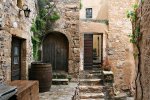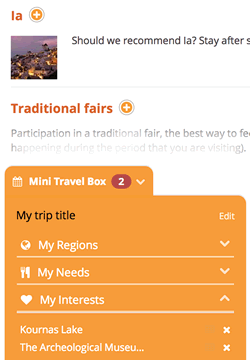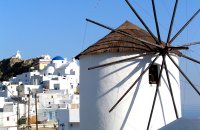
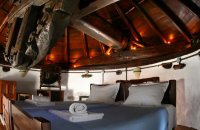
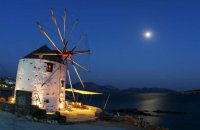
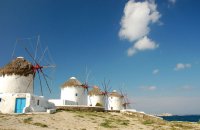
Every island has its own windmill and in some cases much more than just one.
Windmills are one of the most complex creations of the pre-industrial era and probably date back to 700 A.C in Mesopotamia. Their technique came to Europe with the help of the Crusaders and explorers.
The Greek windmill, which is slightly different from the European ones, was first built in 1 A.C by Ironas. They reached their peak back in 12th-13th century on the islands of the Aegean while many of them can still be seen today.
Generally, their form does not vary. They are cylindrical, made of stone with two or three wooden floors and a cone-shaped roof. In Greece there are four types of windmills. Two of them are the Taralis with a vertical or horizontal axis. The vertical type is the oldest and can be seen in the village of Kothri in Andros and on the islands Serifos and Karpathos. The second type is an evolution of the vertical and you will find it mainly on Karpathos. Typical of these windmills are their difficult operation as they need a specific wind direction in order to operate.
The other two types are the axetrocharis and xetrocharis. In the first one we have the same difficulty with the previous ones and can usually be seen in Crete, Sifnos and Karpathos. The latter is the most widespread type in Greece. In matters of form it has no differences from the previous ones. However, the characteristic that makes this type special is its movable roof. This enables it to operate no matter in what direction the wind blows.
During the years that windmills reached their peak, they also played a major role in the economy of the country. They were mainly used to grist grains and brimstone in the mines of Milos as well as pump water (Rodos, Kos, and Crete). Every time the windmill opened, the whole village gathered to grist their products. As a result, the miller opened one of the mill’s cloths to signal the start of its operation. The village’s residents would come with their donkeys that carried all the products and sometimes they even had to wait long hours till it was their turn to use the mill. So, in order to make the long wait more pleasant, small feasts took place.
According to data from the Institute of Greek Mills, there were 2000 windmills operating in Greece, 650 of which were located on the islands of Cyclades.
The most famous windmills were built on the island of Mykonos. Nowadays, you will have the chance to see seven stone, three-storey windmills with small windows and a movable roof.
They can even be seen as the first family business of the island as their original number was 28. In order to admire the renovated windmill of Bontis and the other mills as well, you will have to go up the hill above the settlement of Kastro.
Moreover, a large group of windmills is located in the plateau of Lasithi in Crete. Their original number was quite large but today the best preserved are just 24 windmills, which were used for pumping water, and are located in the northern entrance of the plateau near the village of Tzermiado. Smaller groups of windmills can also be seen on Karpathos, Rodos, Tinos and on other islands.
If you are still interested in seeing a windmill you will meet lots of them on the hills of the islands of the Aegean Sea, while on Mykonos you can visit their interior as they also operate as a museum. On Skyros, Karpathos, Paros and on some other islands as well you will have the chance to taste traditional dishes in windmills that have been turned into restaurants. Finally, if you want to experience a stay in a wonderfully renovated windmill of the 17th century then at Koufonisia you will find an ideal place for it.







